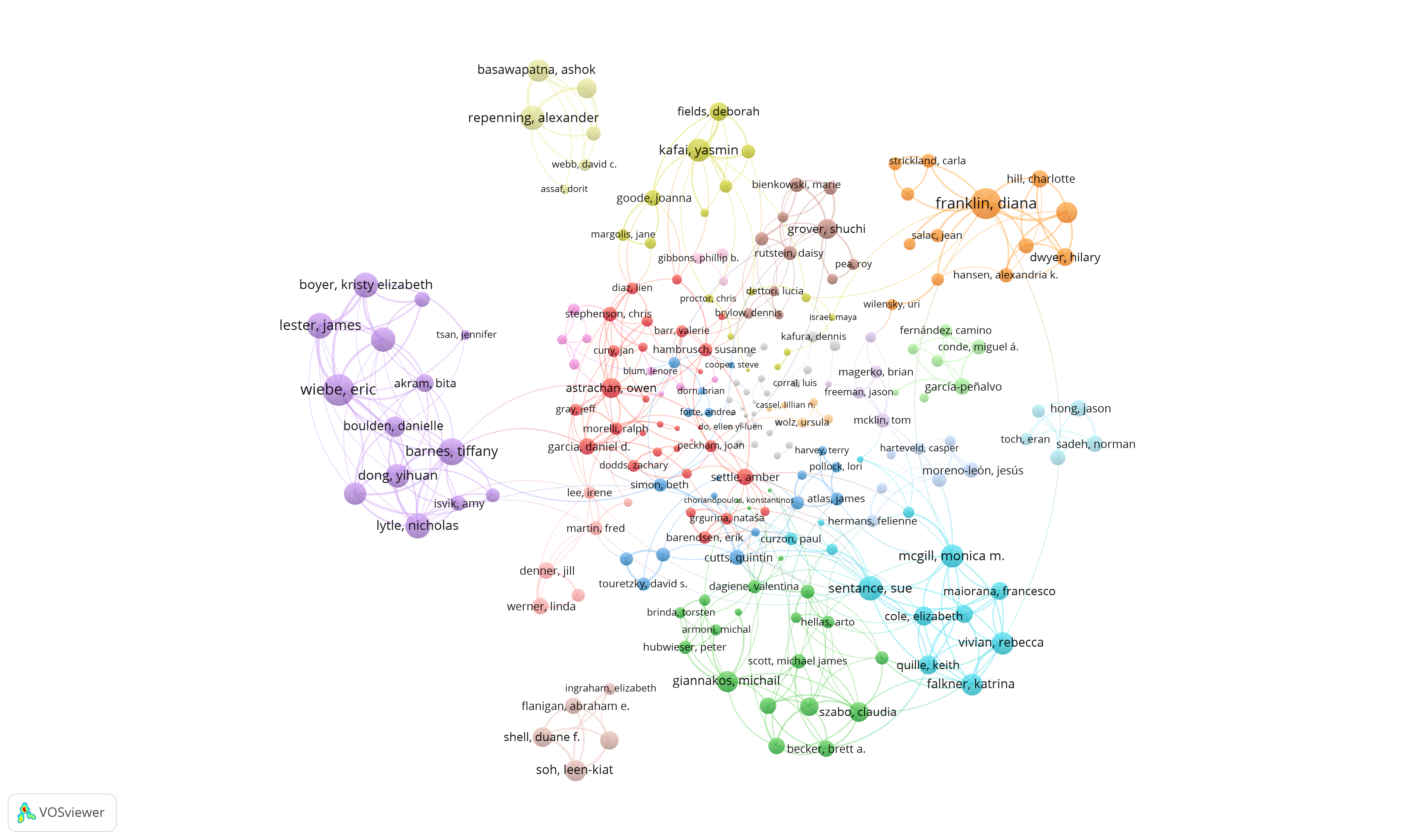Computational thinking (ACM)
Материал из Поле цифровой дидактики
| Описание датасета | Датасет записей из библиотеки ACM по запросу Computational Thinking |
|---|---|
| Описание полей |
|
| Форматы данных | CSV |
| Область знаний | Информатика, Робототехника, Искусственный интеллект |
| Веб-сайт - ссылка на датасет | http://www.uic.unn.ru/pustyn/data-sets/digida/ACM think.csv |
| Примеры использования датасета | |
| Год создания датасета | 2022 |
- Дополнительно - в формате RIS
- http://www.uic.unn.ru/pustyn/data-sets/digida/ACM_think_1645.ris
Связи слов
- Просмотр датасета при помощи VOS viewer - https://app.vosviewer.com/?json=https://drive.google.com/uc?id=1Lepd7ONR7lrDYy6S4HvnYYb0wpXicGsb
Связи авторов
Данные в вики
- filters=Publication Year=2020
{{#get_web_data:url=http://www.uic.unn.ru/pustyn/data-sets/digida/ACM_think.csv |format=csv with header |filters=Publication Year=2020 |data=Title=Title,Pub_Title=Publication Title,Author=Author,Abstract=Abstract Note,URL=Url }} {| class="wikitable sortable" ! Название ! Издание ! Авторы ! Содержание ! URL {{#for_external_table:<nowiki/> {{!}}- {{!}} {{{Title}}} {{!}} {{{Pub_Title}}} {{!}} {{{Author}}} {{!}} {{{Abstract}}} {{!}} {{{URL}}} }} |}
